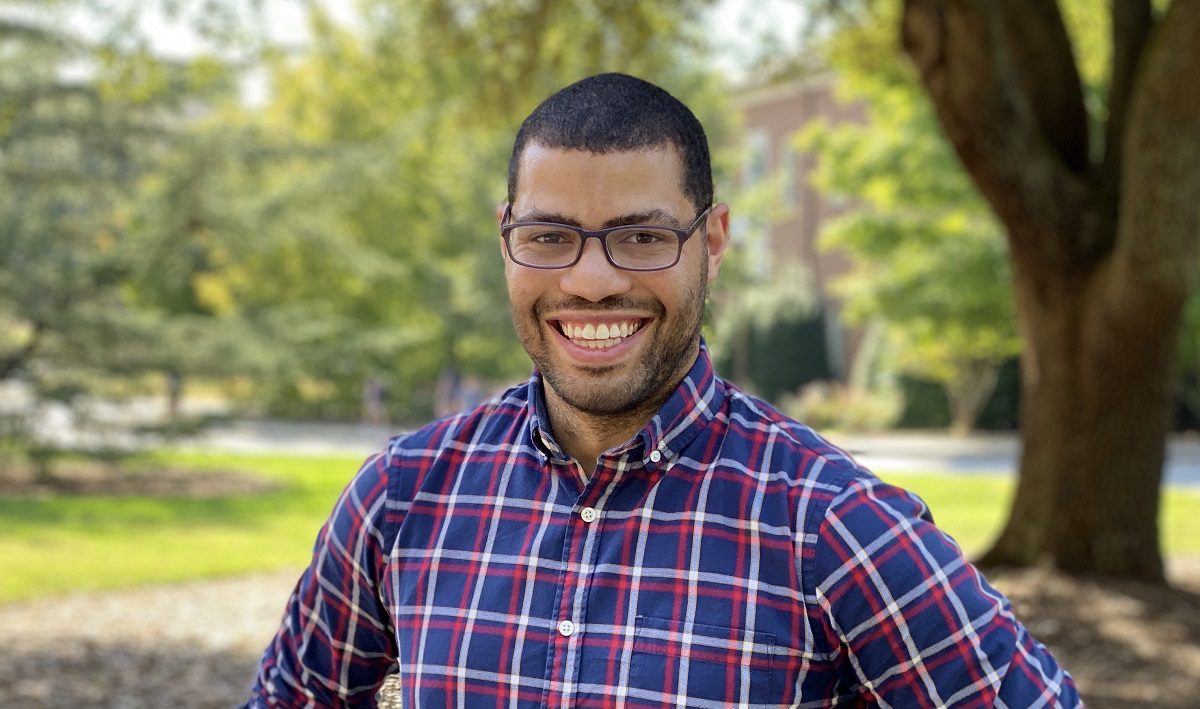Jordan Bounds does the math, wins NSF award for early-career research

Jordan Bounds, a Furman University assistant professor of mathematics, has been awarded a two-year $197,000 grant from the NSF to further his research described in his proposal, “LEAPS-MPS: Functional Identities, Nilpotent Rings, and Garside Shadows.”
If the terms nilpotent rings and Garside shadows have you making a beeline for Wikipedia, it might not prove to be very helpful unless you’re a math sensei. In fairness, Bounds explains that his research remains, for the most part, in the theoretical realm, but the two prongs of his project have potential applications in physics, chemistry and computer science.
Bounds said rings are collections of abstract objects that behave like numbers; we can add them, multiply or divide them in certain situations. “We have something that acts like zero, something that acts like one. And we have these rules that tell us how the objects interact,” he said.
Nilpotent rings are tricky in that they don’t behave in the way we expect numbers to. In short, they misbehave.
“So if we take the number one and add it to itself over and over and over again, it’s just going to keep getting bigger,” Bounds said. “No matter what we do in a nilpotent ring, it’s possible to have some element, some number that if I add it to itself enough times, or if I multiply it by itself enough times, I eventually end up with zero.”
And there’s the rub.
“You would think that if you’re adding or multiplying, it should just keep getting bigger. And it does,” Bounds said. But up to a certain point, it eventually disappears into the ether.
These pseudo numerical miscreants are at the core of the odd behavior exhibited by the rings Bounds studies. He’ll look at functions on the ring that have specific properties and study input/output mechanisms, comparing different “machines” as he goes.
For the second leg of his research, Bounds will examine the “crazy mathematics” that connects nilpotent rings to Garside shadows, which thankfully, are less abstract.
The Garside shadow is a geometric concept, something that can be physically touched and manipulated, Bounds said.
“We’re essentially creating a graph. And we’re looking at the graph and the way that different points connect to each other, and then, we are trying to describe these geometric relationships. And there’s a very strange way that we can actually connect these two things together.”
Already, Bounds is assembling a cadre of students with whom he’ll work throughout the academic year and into the summer. Over the course of the grant, he’ll team with about 12 undergraduates.
Bounds, who came to Furman from the Midwest in 2019, is still reeling from the news of the award.
“It’s surreal to find out I got something this big so early in my career,” he said. “My hope is we’ll be able to establish enough results to build a case for a full-career grant by the end of the project.”